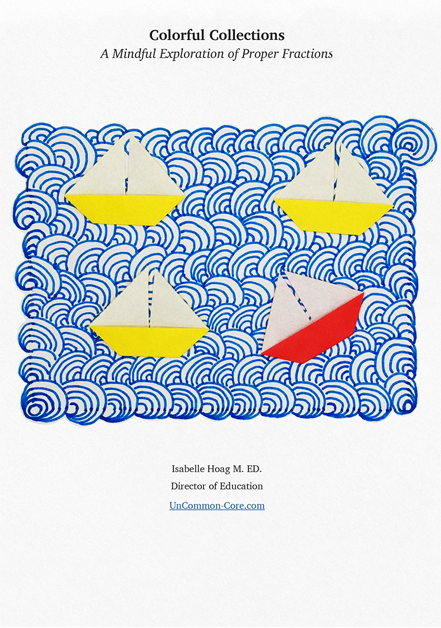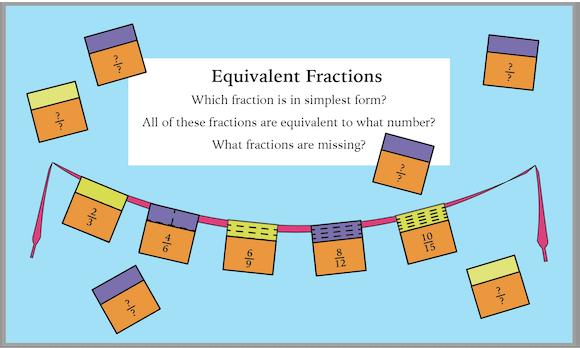
You don’t even need a real shoelace.
You probably have everything you need to do this activity with your students:
- Paper squares three inches per side; use printer or origami paper.
- Pencils, pens, or something to write with.
- Tape or glue sticks depending on your plans for a display.
- Scissors may come in handy.
- Students might want a straight edge at some point.
- Shoelaces, yarn, string, or drawings of shoelaces on construction paper or a whiteboard.
Folding Fractions
Once you have about eight paper squares per student, explain that one square equals 1 whole number. Let your students fold the next square down the middle making halves. Save thirds and fifths for later. There are several way to fold fourths; tell the students if you want the square folded any special way. Consider having students draw lines over the creases to make them easier to see. Have your students label each square as they go.

Folding Fifths, Thirds, and So On
When the denominator of a fraction is an odd number the fractions are more difficult to fold. There are a number of ways to fold thirds (video) and other fractions with odd numbers in the denominator. Down load instructions and a free mini poster for your students to follow. The basic idea has been around for a while: use parallel lines at an angle to find a certain number of other parallel lines.
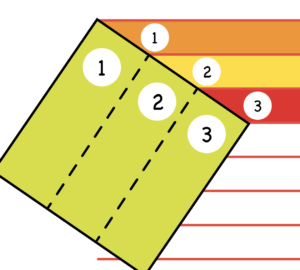
Where does the shoestring come in?
Once your students have folded and labeled the papers, they can make a display or save them for more activities. If you have real shoelaces, students could stick their fraction squares to the shoelace and then stick the shoelace to a bulletin board, a wall, or the back of their chairs. Fraction squares can be used to show whatever your students are learning about in class.


Equivalent Fractions
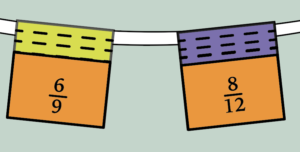
Improper Fractions
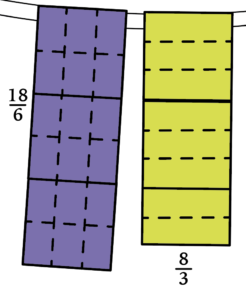
Mixed Numbers
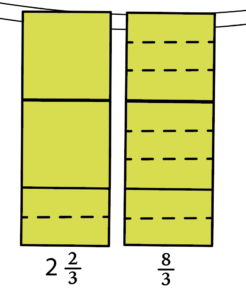
Extensions and Variations
- Some students might want to use larger paper or make a giant display for the hall outside the room.
- Invite your students to study the collections of paper fractions. Have them write about or discuss the patterns that they see and the questions they might have.
- Ask students to make additional paper fractions that continue on where the first display left off.
- Use the shoestring as a number line to arrange your fractions in order.
- Challenge students to write sentences about their work using academic vocabulary accurately.
- Students could work in pairs or small groups to model the information shown using different materials. For example, when looking at a shoestring of unit fractions, students could show where those fractions are located on a number line or they could use dots to create sets in which one dot from each set is a different color.
Folding paper fractions to make a display along the length of a shoestring is a memorable activity that provides students an easy way to think about fractions.
Share This Story, Choose Your Platform!
Download Colorful Collections:
A Mindful Exploration of Proper Fractions
Help your students make sense of fractions.
I started teaching in 1987, which means I’ve collected many tips and tricks along the way. In this ebook, I share concepts, strategies, and classroom materials to help you make math sticky.
Along with this useful ebook, you will receive weekly emails from StickyMath@UnCommon-Core.com. I send information like: teacher tips, educational ideas, book reviews, curated lists, reviews of educational sites, and free first drafts of products that I’m creating for my TPT store. That way, you get helpful ideas and free stuff, while I get some feedback before I finalize products and put them up for sale.
I value your privacy. I will never sell your information. You may unsubscribe at any time.
All the best!
Isabelle
Isabelle Hoag M. Ed.
